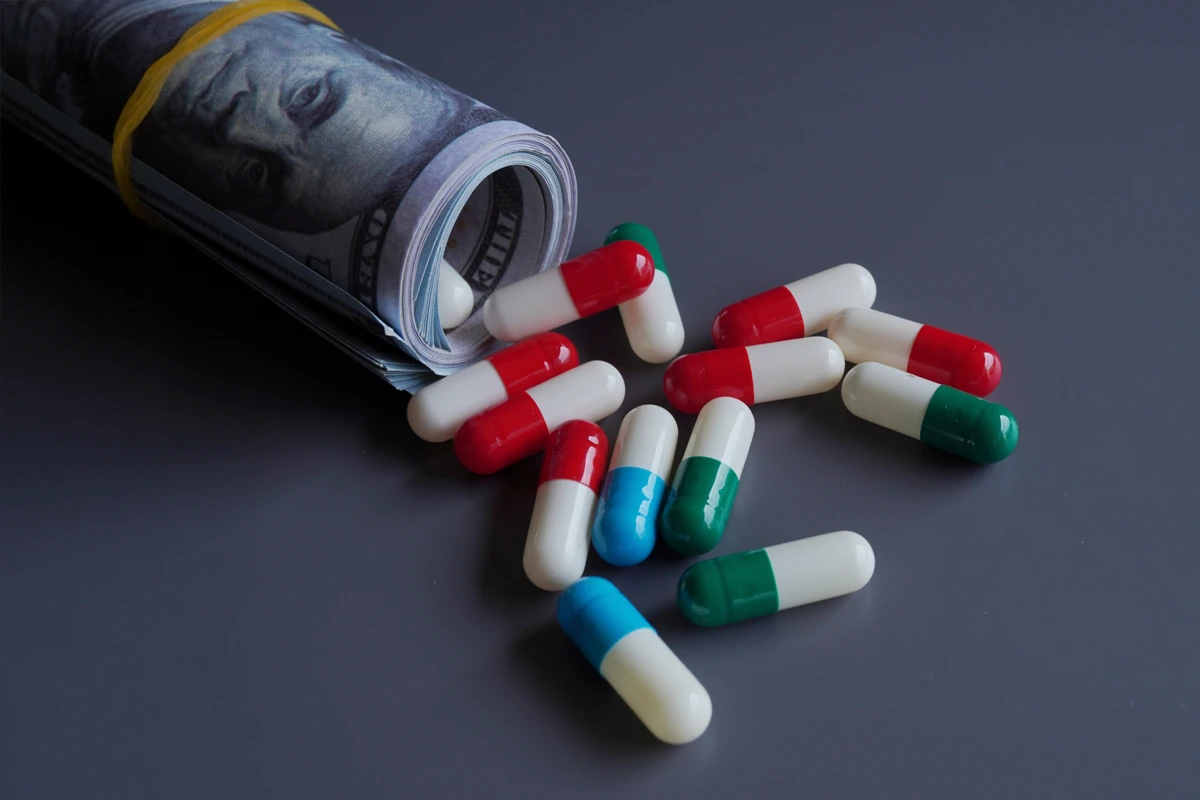Note: Prices can vary based on location, pharmacy, and insurance coverage. It's advisable to consult with your healthcare provider and pharmacist to ensure the generic version is appropriate for your treatment and to obtain the most accurate pricing.
In today’s healthcare landscape, managing medical expenses is a priority for many individuals. One effective strategy to achieve this is by opting for generic medications, which offer the same therapeutic benefits as their brand-name counterparts but at a fraction of the cost. In this article, we will explore the top 10 generic medications that can help you save money without compromising on quality. Additionally, we’ll guide you on how to identify generic alternatives for your current prescriptions, ensuring you make informed decisions for your health and wallet.
Research on Why Generic Medications are Cost-Effective
Opting for generic medications over brand-name counterparts can lead to substantial savings without compromising efficacy. Generic drugs are required to have the same active ingredients, strength, and dosage form as their brand-name versions. On average, generics cost 80–85% less than brand-name drugs. pmc.ncbi.nlm.nih.gov
The U.S. Food and Drug Administration (FDA) ensures that generic medications meet rigorous standards for quality, performance, and manufacturing. This means you receive the same therapeutic benefits as brand-name drugs but at a fraction of the cost. fda.gov
The significant cost savings associated with generic drugs can make essential treatments more accessible, allowing patients to adhere to their prescribed therapies without financial strain. This affordability can lead to better health outcomes, as individuals are less likely to skip doses or forgo treatment due to cost concerns. health.harvard.edu
Choosing generic medications is a financially savvy decision that maintains the high standards of safety and effectiveness found in brand-name drugs. By opting for generics, you can manage your health more affordably without compromising on quality.

Here are 10 Examples of Generic Medications
Atorvastatin (Generic) vs. Lipitor (Brand)
Use: Lowers cholesterol levels to reduce the risk of heart disease.
Efficacy: Studies have shown no significant differences in lowering total cholesterol, low-density lipoprotein cholesterol, or triglyceride levels between generic atorvastatin and Lipitor.
Cost Comparison: A 30-day supply of brand-name Lipitor can cost around $150, while generic atorvastatin may be priced around $10 for the same supply.
Potential Savings: Approximately $140 per month.
Lisinopril (Generic) vs. Zestril (Brand)
Use: Treats high blood pressure and heart failure, and improves survival after heart attacks.
Efficacy: Lisinopril is the active ingredient in both Zestril and its generic versions, offering the same therapeutic effects.
Cost Comparison: Brand-name Zestril can cost about $50 for a 30-day supply, whereas generic lisinopril is often available for around $10.
Potential Savings: Approximately $40 per month.
Metformin (Generic) vs. Glucophage (Brand)
Use: Manages blood sugar levels in individuals with type 2 diabetes.
Efficacy: Metformin, the active ingredient in both Glucophage and its generic versions, provides the same blood sugar control.
Cost Comparison: A 30-day supply of Glucophage may cost around $100, while generic metformin is typically priced at $4 to $10.
Potential Savings: Up to $90 per month.
Sertraline (Generic) vs. Zoloft (Brand)
Use: Treats depression, anxiety disorders, and other mood conditions.
Efficacy: Sertraline is the active ingredient in both Zoloft and its generic versions, ensuring identical therapeutic effects.
Cost Comparison: Brand-name Zoloft can cost approximately $100 for a 30-day supply, whereas generic sertraline is often available for $10 to $15.
Potential Savings: Around $85 to $90 per month.
Omeprazole (Generic) vs. Prilosec (Brand)
Use: Reduces stomach acid to treat conditions like gastroesophageal reflux disease (GERD).
Efficacy: Omeprazole, the active ingredient in both Prilosec and its generic versions, offers the same acid-reducing benefits.
Cost Comparison: A 30-day supply of Prilosec may cost about $200, while generic omeprazole is available for approximately $20.
Potential Savings: Approximately $180 per month.
Amlodipine (Generic) vs. Norvasc (Brand)
Use: Treats high blood pressure and chest pain (angina).
Efficacy: Amlodipine is the active ingredient in both Norvasc and its generic versions, providing the same therapeutic effects.
Cost Comparison: A 30-day supply of brand-name Norvasc can cost around $100, while generic amlodipine is often available for approximately $10.
Potential Savings: Approximately $90 per month.
Alprazolam (Generic) vs. Xanax (Brand)
Use: Manages anxiety and panic disorders.
Efficacy: Alprazolam is the active ingredient in both Xanax and its generic versions, ensuring identical therapeutic benefits.
Cost Comparison: A 30-day supply of brand-name Xanax may cost about $100, whereas generic alprazolam is typically priced around $10.
Potential Savings: Approximately $90 per month.
Fluoxetine (Generic) vs. Prozac (Brand)
Use: Treats depression, obsessive-compulsive disorder (OCD), and other mood disorders.
Efficacy: Fluoxetine is the active ingredient in both Prozac and its generic versions, offering the same therapeutic effects.
Cost Comparison: A 30-day supply of brand-name Prozac can cost around $200, while generic fluoxetine is available for approximately $10 to $15.
Potential Savings: Approximately $185 to $190 per month.
Clopidogrel (Generic) vs. Plavix (Brand)
Use: Prevents blood clots in patients with heart conditions.
Efficacy: Clopidogrel is the active ingredient in both Plavix and its generic versions, providing the same therapeutic benefits.
Cost Comparison: A 30-day supply of brand-name Plavix may cost about $200, whereas generic clopidogrel is typically priced around $15.
Potential Savings: Approximately $185 per month.
Sildenafil (Generic) vs. Viagra (Brand)
Use: Treats erectile dysfunction.
Efficacy: Sildenafil is the active ingredient in both Viagra and its generic versions, ensuring identical therapeutic effects.
Cost Comparison: Brand-name Viagra can cost about $60 per pill, while generic sildenafil is available for approximately $4 to $10 per pill.
Potential Savings: Up to $56 per pill.

How to Find Other Generic Medications
Embarking on the journey to incorporate generic medications into your healthcare routine is a prudent step toward achieving financial freedom. Here’s how you can get started:
-
Consult Your Healthcare Provider: Begin by discussing with your doctor the possibility of substituting your current prescriptions with generic alternatives. They can provide guidance on the efficacy and suitability of generics for your specific health needs.
-
Engage with Your Pharmacist: Pharmacists are valuable resources for information on generic medications. They can inform you about available generic equivalents and assist in understanding any differences between brand-name and generic drugs.
-
Utilize Online Resources: The FDA’s Drugs@FDA database is a comprehensive tool to identify generic equivalents for brand-name medications. Additionally, the Orange Book Express (Apple Store | Google Play) mobile app provides easy access to information on approved drug products and their generic counterparts.
-
Review Your Insurance Formulary: Check with your insurance provider to understand which generic medications are covered under your plan. This can help you make cost-effective choices and anticipate any out-of-pocket expenses.
-
Leverage AI-Powered Tools: Utilize AI-driven platforms that analyze extensive pharmaceutical data to identify generic equivalents for brand-name medications. These tools can suggest cost-effective alternatives, which you can then discuss with your healthcare provider to ensure suitability for your treatment plan.
Wrap up
In conclusion, integrating generic medications into your healthcare regimen is a strategic approach to managing medical expenses without compromising treatment quality. Generics offer the same therapeutic benefits as their brand-name counterparts, often at a fraction of the cost. By actively engaging with healthcare professionals and utilizing available resources, you can make informed decisions that contribute to both your health and financial well-being.



